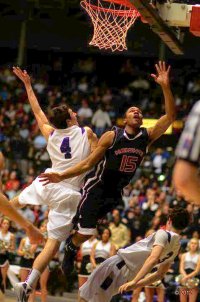Canon community:
I would like your help with some mathematical/imaging research that I am doing. I am the developer for an unreleased algorithm for correcting underexposure from any type of image. I developed it on the side about nine years ago, when I was in the initial stages of some image compression research. The algorithm uses mappings from complex analysis (not "complex" meaning "complicated," but meaning the use of imaginary numbers) to create a seamless tone curve for any color, brightening or darkening it somewhat independently of how much information is available in the historgram. The RAW/JPEG bit depth doesn't matter, but the compression ratio is somewhat important.
The algorithm does NOT work miracles, and it is very "RAW" in that no post processing is done, so sometimes it produces hot pixels (that's why compression ratio is important, because anything that wasn't true data in the original file gets exaggerated when mapped using complex variables).
The algorithm does not differentiate between "shadow" or "highlight" brightening; it simply works by maintaining the exact same color hue, and adding color-independent brightness to it. The biggest benefit I believe is that colors are extremely pure and precisely maintained throughout the whole process. It's kind of like showing a slide--just brighten the projector to see very dim details and increase the dynamic range.
I am looking for some photos (small resolution, because that's not important; around 720px for the maximum dimension) to experiment with that aren't my own photos. I understand my own algorithm too well, and I feel like I can cook the results too easily if I use my own photos.
I am attaching an example of a photo that is two stops underexposed, and then the corrected version. (Note: the first image is actually at a greater than 100% magnification--I accidentally had my Matlab window too large when I took the screenshot.)
Thanks everyone.
I would like your help with some mathematical/imaging research that I am doing. I am the developer for an unreleased algorithm for correcting underexposure from any type of image. I developed it on the side about nine years ago, when I was in the initial stages of some image compression research. The algorithm uses mappings from complex analysis (not "complex" meaning "complicated," but meaning the use of imaginary numbers) to create a seamless tone curve for any color, brightening or darkening it somewhat independently of how much information is available in the historgram. The RAW/JPEG bit depth doesn't matter, but the compression ratio is somewhat important.
The algorithm does NOT work miracles, and it is very "RAW" in that no post processing is done, so sometimes it produces hot pixels (that's why compression ratio is important, because anything that wasn't true data in the original file gets exaggerated when mapped using complex variables).
The algorithm does not differentiate between "shadow" or "highlight" brightening; it simply works by maintaining the exact same color hue, and adding color-independent brightness to it. The biggest benefit I believe is that colors are extremely pure and precisely maintained throughout the whole process. It's kind of like showing a slide--just brighten the projector to see very dim details and increase the dynamic range.
I am looking for some photos (small resolution, because that's not important; around 720px for the maximum dimension) to experiment with that aren't my own photos. I understand my own algorithm too well, and I feel like I can cook the results too easily if I use my own photos.
I am attaching an example of a photo that is two stops underexposed, and then the corrected version. (Note: the first image is actually at a greater than 100% magnification--I accidentally had my Matlab window too large when I took the screenshot.)
Thanks everyone.















